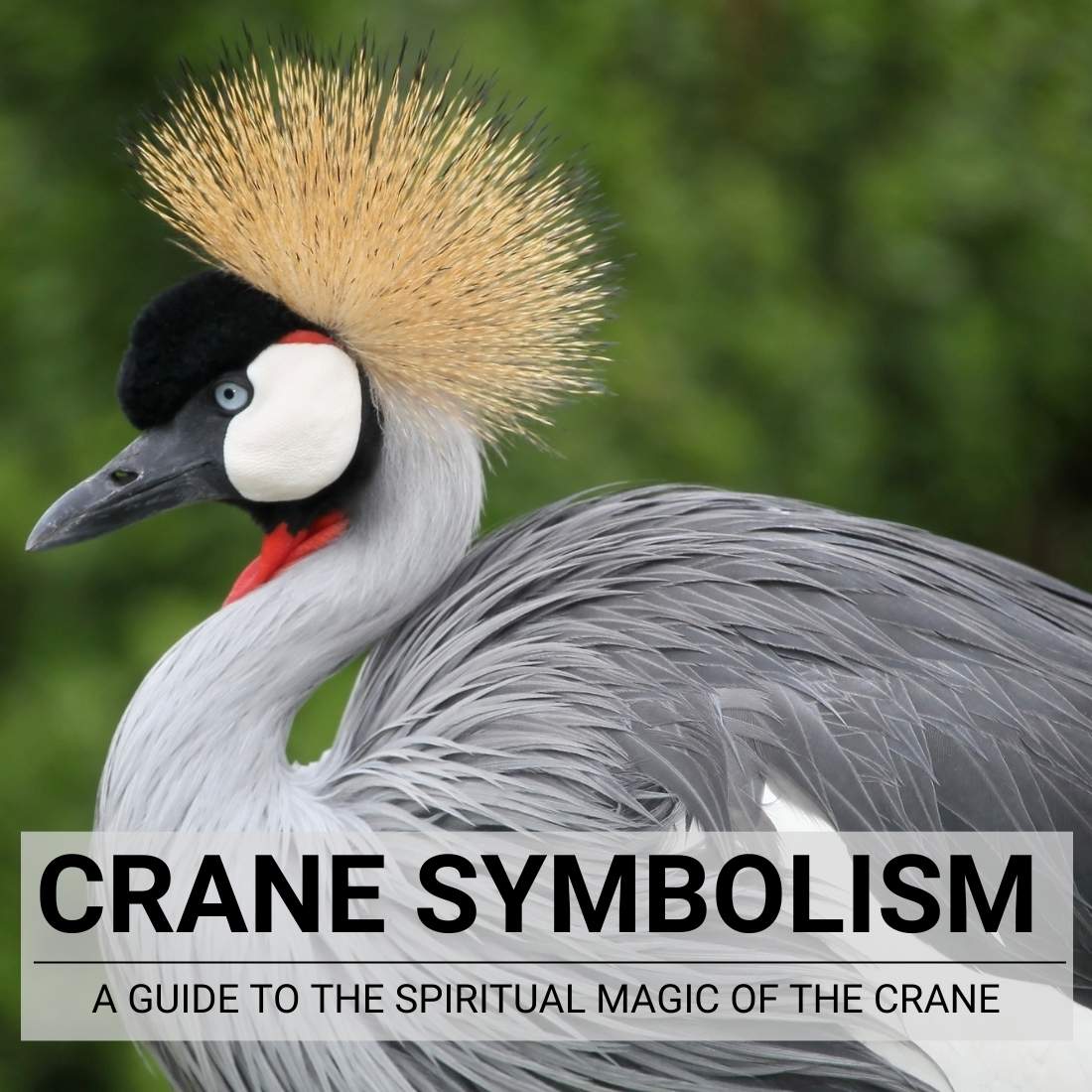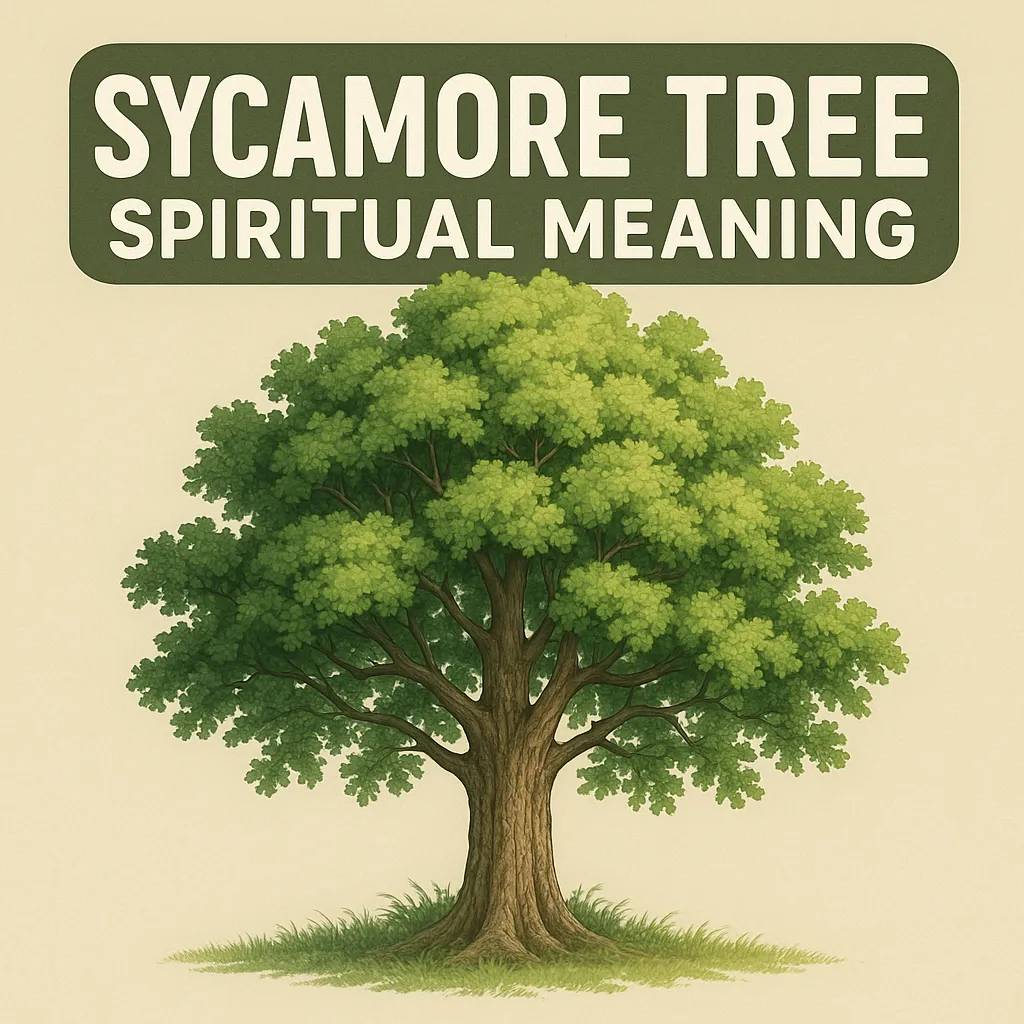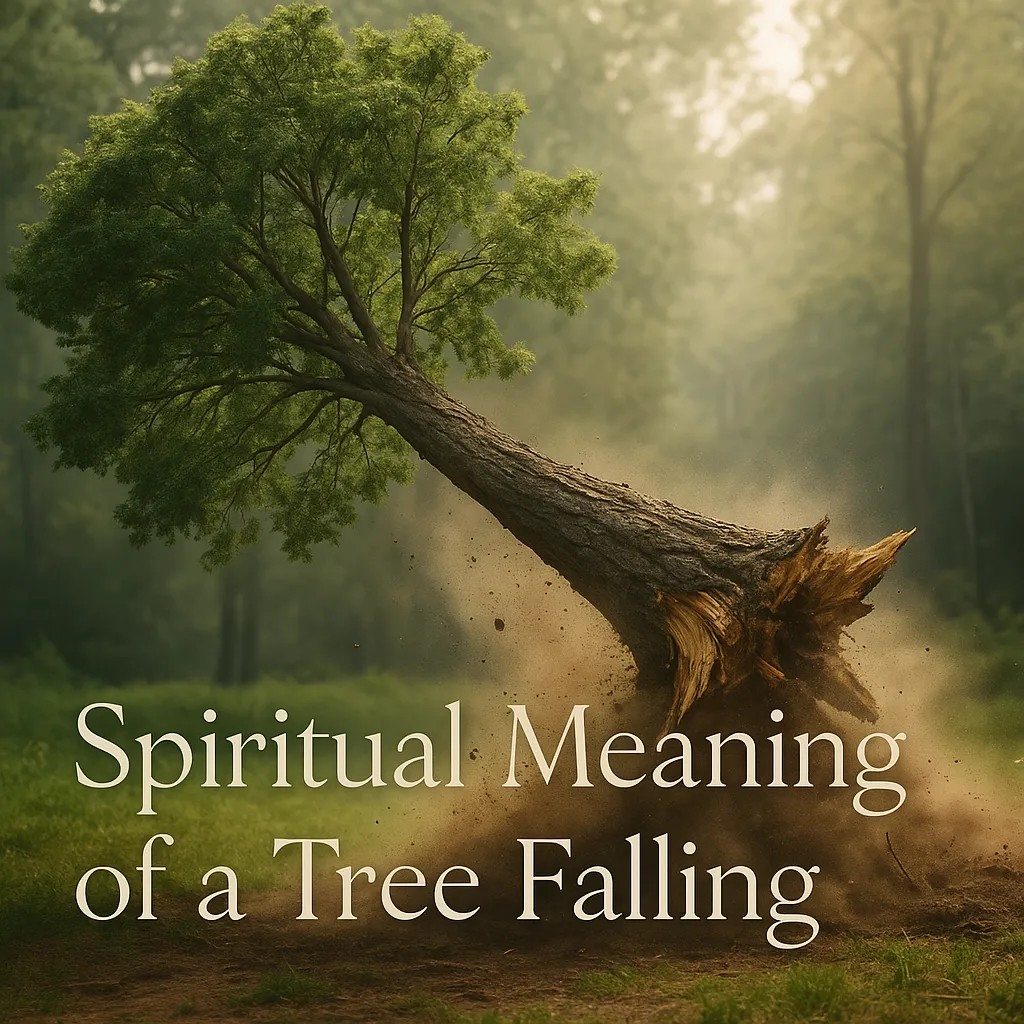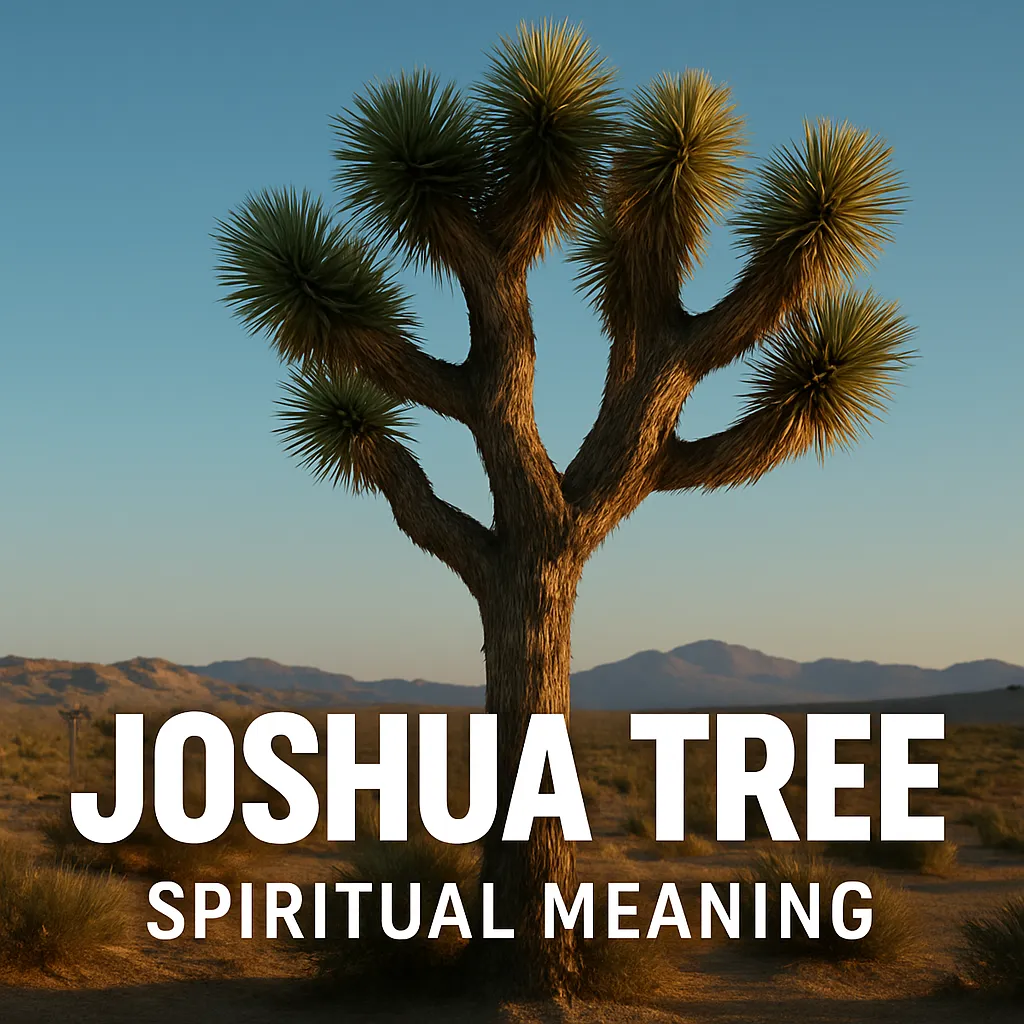Table of Contents
- 1 Key Takeaways
- 2 What do cranes symbolize?
- 3 The crane symbolism in different cultures
- 3.1 Native Americans
- 3.2 Japanese crane
- 3.3 Chinese culture
- 3.4 Celtic crane
- 3.5 Australian culture
- 3.6 Korean culture
- 3.7 Indian culture
- 3.8 Ancient Egypt
- 3.9 African culture
- 3.10 Cranes in Greek mythology
- 3.11 Crane symbolism in Christianity
- 3.12 Crane symbolism in Buddhism
- 3.13 Crane symbolism in Islam
- 3.14 Common types of cranes and their meanings
- 4 The crane spirit animal meaning
- 5 The crane animal totem
- 6 The crane power animal
- 7 Exploring Crane Symbolism Across Cultures: Meanings and Traditions
- 8 What does it mean when you dream of cranes?
- 9 Conclusion
- 10 Video: Cranes: Symbols of Survival
- 11 FAQ
- 11.1 Is it an omen when you encounter a Crane?
- 11.2 What do paper cranes symbolize?
- 11.3 What does a crane symbolize in the bible?
- 11.4 What is the origami crane meaning?
- 11.5 What does the blue crane symbolize in South Africa?
- 11.6 What is the spiritual meaning of a crane?
- 11.7 What does a crane symbolize in Chinese mythology?
- 11.8 Why are cranes considered good luck?
- 11.9 What is the significance of crane art in different cultures?
- 11.10 What does a crane represent as a spirit animal?
- 11.11 What is the meaning behind crane sculptures and statues?
- 11.12 What does the crane dance signify in cultural traditions?
- 11.13 What’s the significance of a blue crane in symbolism?
Key Takeaways
- Cranes symbolize longevity and good fortune across many cultures, particularly in Japan where they’re associated with happiness, peace, and prosperity.
- The birds are known for their loyalty and commitment, mating for life which makes them powerful symbols of fidelity and enduring relationships.
- In Japanese tradition, folding 1,000 paper cranes is believed to grant wishes, bring healing, and represent hope—as popularized by the story of Sadako Sasaki.
- As spirit animals, cranes represent balance and spiritual awakening, teaching us to navigate between different elements and levels of consciousness.
- The crane’s elegant courtship dance symbolizes creativity, beauty, and celebration, reminding us to express ourselves with confidence and grace.
This blog post will explore the meaning of the crane symbolism. Cranes can represent many things but they all seem to have a common theme: good fortune. It’s no wonder that the Japanese word for “cranes” is associated with happiness and longevity. In this article, we’ll learn more about what cranes symbolize and how you can incorporate them into your own life!
Long-Legged Beauty: The Significance of the Crane Meaning
Although not genetically related, cranes may seem like a close relative of storks and herons (see the comparison between the stork vs crane here.) With the exception of South America and the frigid temperatures of Antarctica, they can be spotted frolicking the marshes and plains of every other continent.
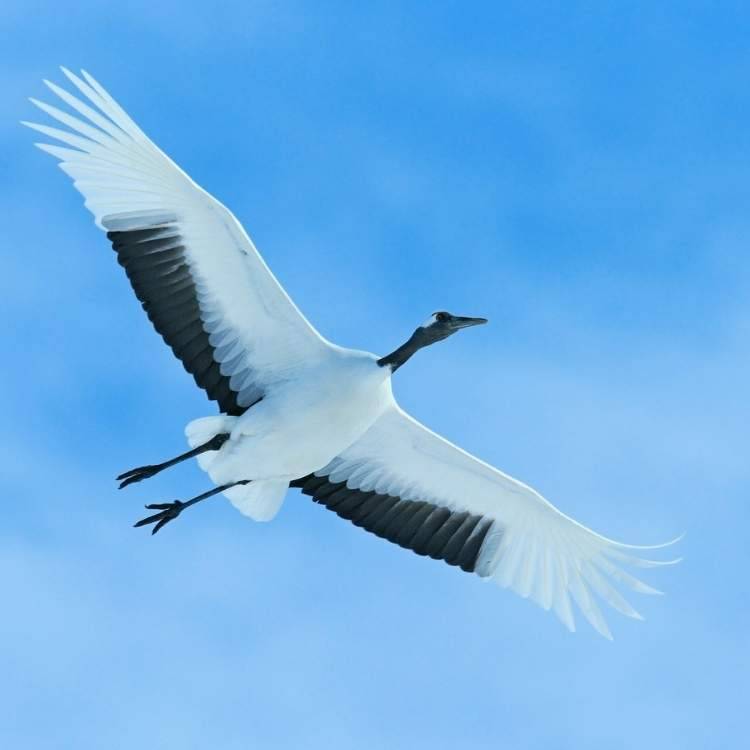
Long observed to be opportunistic feeders, they alter their diet according to the season, switching from a range of small rodents, amphibians, and fish to seeds, grains, plants, and berries.
Cranes belong to a group of birds called wading birds or waders with long necks.
Regarded as a representation of happiness, longevity, and good fortune, it simply fits that we take a close look at the various crane symbolism.

“The wise man should restrain his senses like the crane and accomplish his purpose with due knowledge of his place, time, and ability.”
Chanakya
What do cranes symbolize?
Known for its long history of symbolism, the crane is highly revered in both Eastern and Western cultures. While it is associated with longevity and femininity in Japan, this majestic bird is considered by the Chinese as one of the four sacred creatures alongside the dragon, tiger, and tortoise.
A revered symbol that draws the perfect balance between having a strong faith and material abundance, here’s a quick sweep into what the crane symbolizes.
Creativity
Adored for their striking mating dance rituals, the crane spirit appears to rouse our imaginative side. Not only does it help relieve our anxiety and stress, but it also urges us to confidently express ourselves.
Loyalty
As one of the few animals that mate for life, these relatively protective creatures are widely seen as a symbol of love that has no end. The crane teaches us how commitment and faithfulness make us favored members of our community and cherished by our family and friends.
Dignity
Boasting its superior posture, the crane symbolism radiates both aristocracy and nobility. This may have led different cultures to consider cranes as figures of grace, integrity, and honor.
These tall birds remind us to be proud of our natural gifts and refrain from constantly trying to meet the expectation of others.
Spiritual awakening
Revered for its ability to walk, swim, and fly, the crane spirit reminds us of our own capacity to reach higher levels of spirituality.
Since such an eye-opening spiritual experience provides us with joy, relief, and deep-seated knowledge, these remarkable birds enable us to understand life’s different facets better.
Contentment
Regarded as a bird of happiness, a crane appears with powerful messages of joy, optimism, and peace of mind. They encourage us to remain strong and resilient amidst being lonesome while staying devoted to our values and principles.
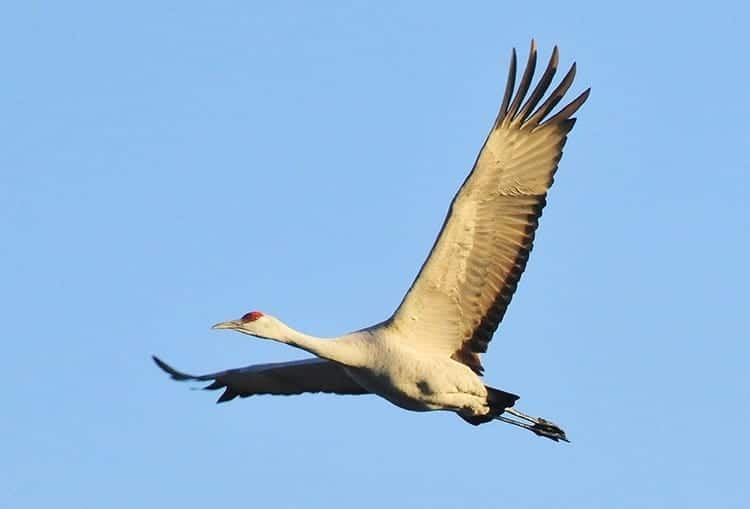
Prosperity
Often spotted frolicking on plains and marshes of various continents, the crane symbolism teaches us to find a perfect balance in life as it helps bring happiness, opportunities, and good fortune.
Long believed to be an animal that heralds the arrival of a prosperous period, they encourage us to help make other’s prosper as well.
Beauty
Typically appearing graceful and polished, these beautiful birds remind us about the charm that lies within and how we can use it to help others.
Cranes inspire us to give our gifts the utmost value and importance. They serve as reminders that though things may not always go our way, we should learn to deal with our difficulties with great knowledge, sophistication, and grace.
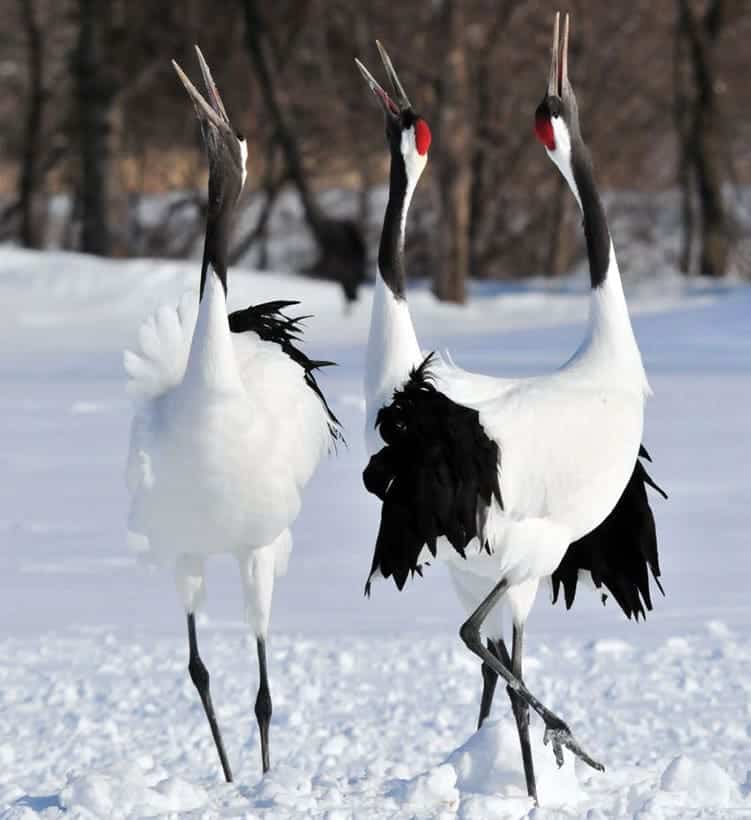
Intuition
Considered to be among the large birds, these notoriously territorial creatures offer enormous symbolic meanings that urge us to ensure the safety of our loved ones.
A symbol of focus, discipline, and vigilance, the crane spirit animal encourages us to face life’s challenges with confidence as it often brings in new exciting life experiences.
Longevity
Revered for being one of the longest-living birds, the crane spirit encourages us to form bonds that last a lifetime.
With a lifespan that stretches up to 30 years, these remarkable creatures allow us to contribute more to our community with our spiritual gifts and wisdom.
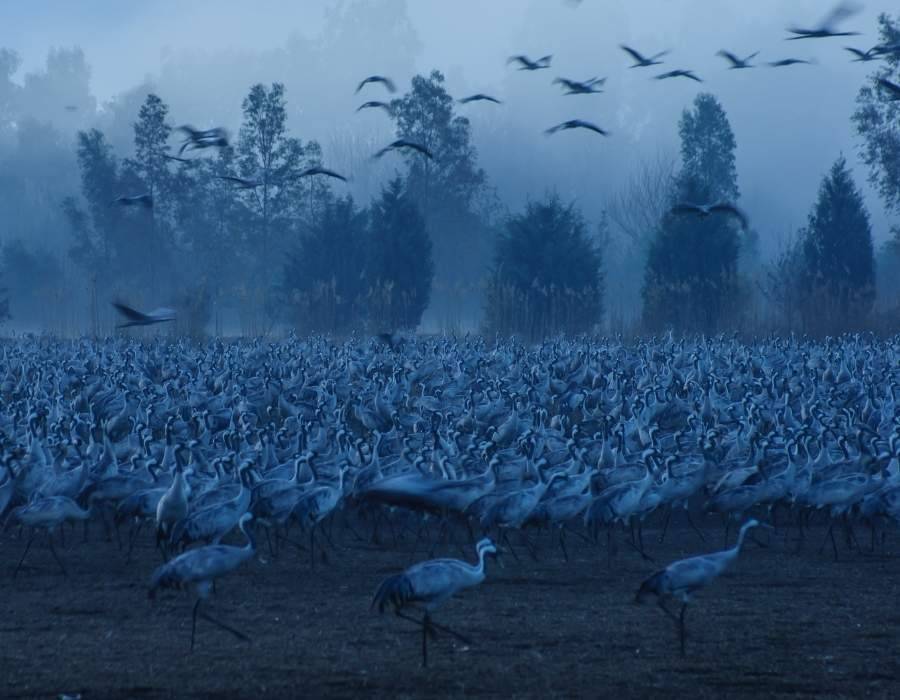
Travel
They are respected by many for their awesome ability to traverse the waters, roam the land, and soar in the sky. The appearance of cranes indicates that you are about to embark on a physical or spiritual journey.
As they travel thousands of miles during times of migration, it indicates our readiness to jump borders in search of greener pastures.
The crane symbolism in different cultures
The image and symbolism of cranes vary in different cultures and traditions. Their warm personality and exquisite beauty, along with their eye-catching dance during courtship, provide countless symbolism and interpretations that enthroned the crane’s significance in the lives of well-known civilizations.
Native Americans
Native American men dress up in crane feathers to perform what they call the crane dance, hoping to impress and possibly land a date with a potential mate.
They believe that when a crane shows itself while they are fishing, it leads them to an abundance of catch as they are symbols of luck and fortune.
Particular tribes consider cranes a symbol of good leadership. They also believe that the bird enhances their public speaking skills, turning them into incredible peacemakers.
Japanese crane
Being one among many holy creatures, the Japanese crane holds a huge significance to their culture.
Believed to symbolize fidelity, endurance, and good fortune, they follow the tradition of gifting newlyweds a plethora of paper origami cranes to wish the couple years of happiness and abundance.
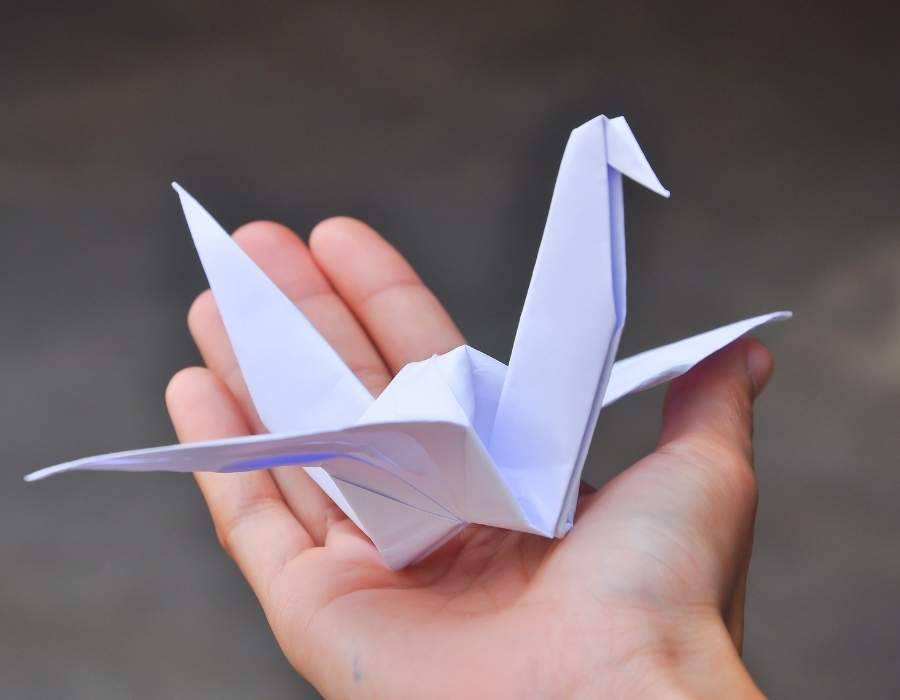
A paper bird is also given to newborns, not to make them float in the tub during the bath, but to wish them a long and prosperous life.
A thousand origami cranes are considered bearers of peace, hope, and healing and are traditionally offered to shrines and temples.
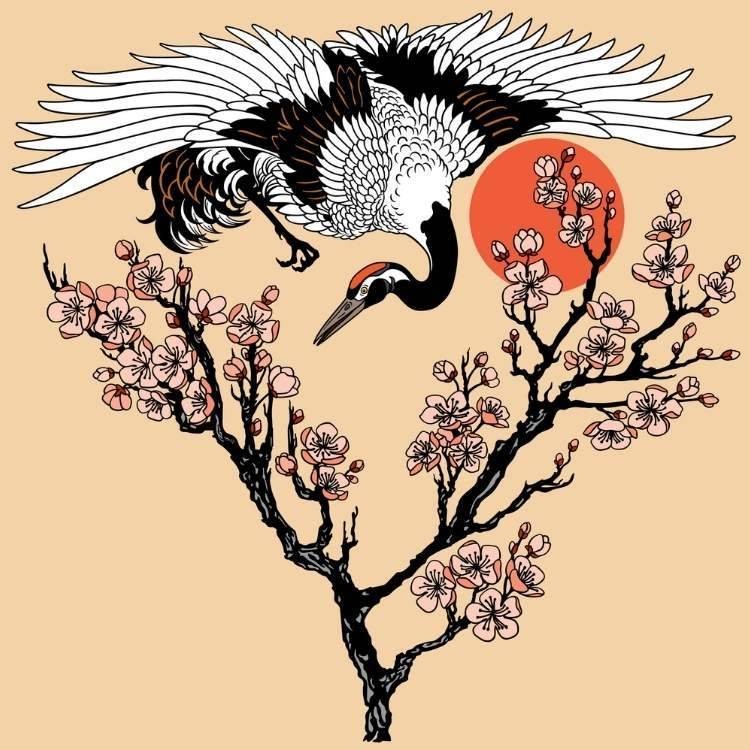
The Japanese culture sees the crane as a bird that brings good luck. It is seen as bringing longevity and peace since it lives so long (sometimes even over one hundred years.) In fact, many people give gifts of paper cranes to celebrate someone’s birthday!
Considered a symbol of peace, the novel “Sadako and the Thousand Paper Cranes” talks about a young girl named Sadako Sasaki and her attempt to create a thousand paper cranes to spread a message of peace across the world. While it is believed that Sadako Sasaki passed from the effects of the atomic bomb that flattened Hiroshima before completing her goal, her vision was heard loud and clear in Japan and beyond.
Chinese culture
From their many artworks to the way they associate them with their life, the Chinese have long given the crane spirit such high reverence. They believed that seeing cranes soaring through the sky is a sign of happiness and charm.
Known for living a long and fruitful life, crane feathers were perceived to prolong one’s life.
However, Tibetan culture indicates white cranes as messengers of death.
One particular legend says that when a person is about to die, they will see an image of two or three white cranes flying overhead. The head crane cries out and tells the dying soul it’s time for them to go home – but if this warning goes unheeded, death comes quickly.
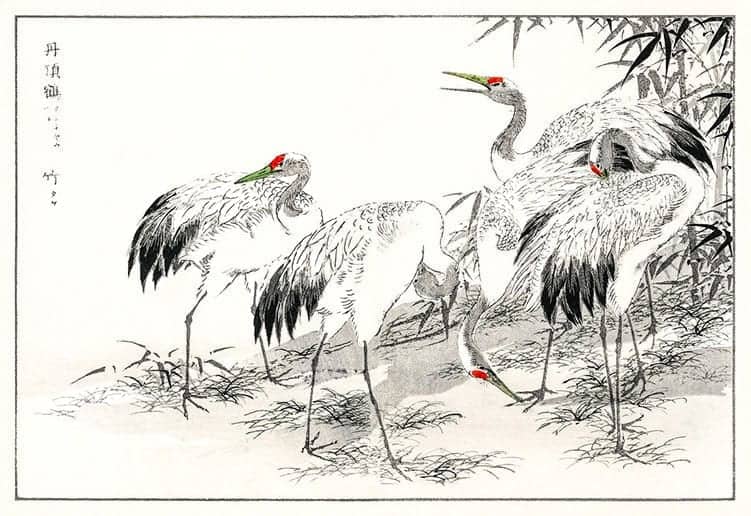
Celtic crane
Once common throughout Ireland, cranes have long held great significance in Irish mythology. A Celtic crane was seen as a divine messenger that brought curses and blessings.
Such a trait gave birth to the belief that cranes represented high levels of wisdom and knowledge. By mimicking how a crane stands in the water, Celts perceived that they can channel the crane’s gift of knowledge, patience, and longevity.
Celtic tradition says that crane people are gifted with the ability to transform into the shape of a bird when they ask for penance.
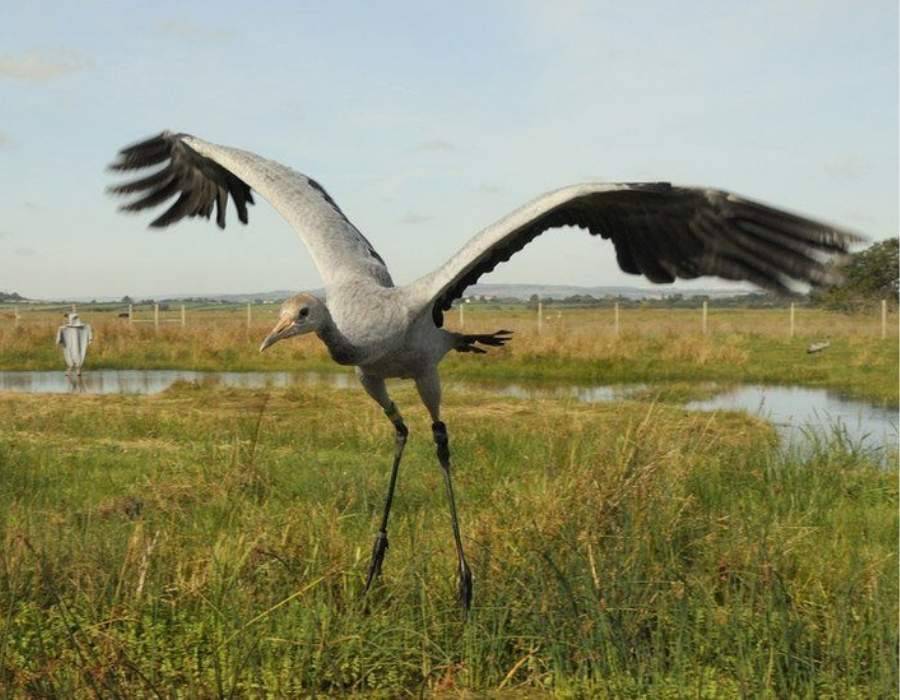
Australian culture
Inspired by the way cranes dance during courtship, the aboriginal people of Australia associated them with the sun’s movement in the various seasons. Held as a bird that aggressively protects its territory and ensures the safety of its young, these flying creatures were seen as a symbol of fertility and protection of our homes and loved ones.
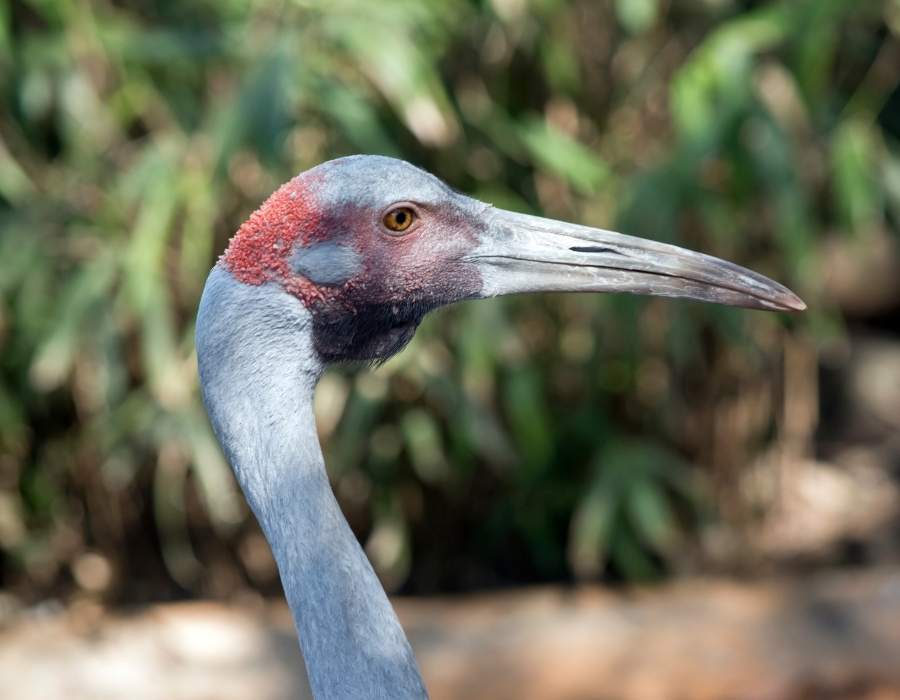
Korean culture
While ancient tradition urges Koreans to keep the spirit of the crane dance alive, Koreans viewed cranes as an indication of peace and eternal youth. A bird that reminds us about the significance of a life of balance and harmony, the crane is trusted to bring friendship and accord to the South and their neighbors from the North.
Indian culture
Perhaps because of their trait of being loyal to a single mate, cranes in India are perceived to symbolize long-lasting love and trustworthiness. They believe that if one from a crane pair passes away, it won’t take long before the other follows its sad fate.
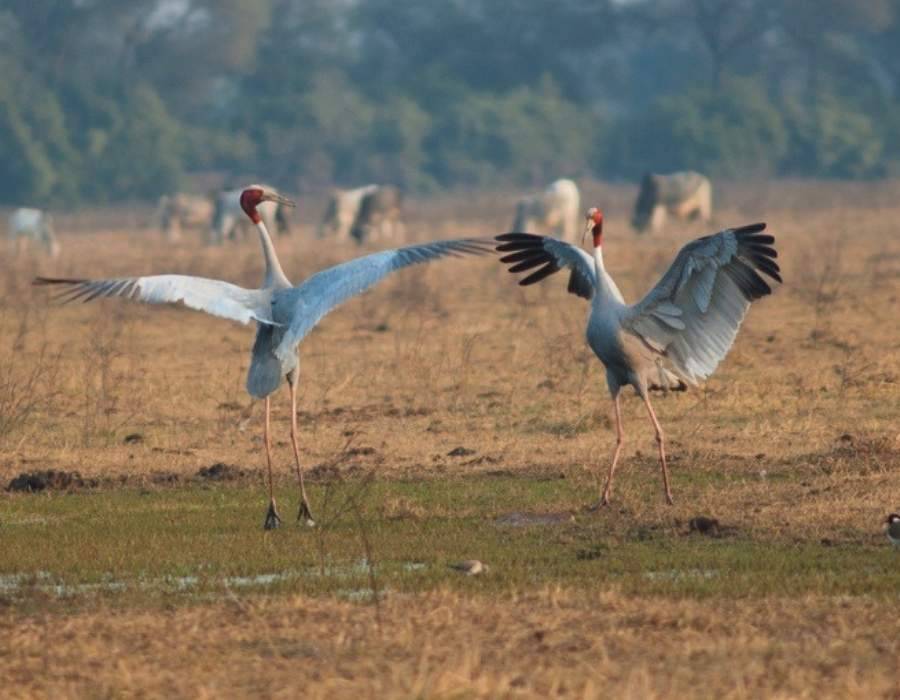
Ancient Egypt
Often illustrated as a man with a crane’s head, the Egyptian god Thoth brought knowledge in science, math, and magic to Ancient Egypt. It is widely believed that hieroglyphics and the written language were inspired by the crane’s unique flying patterns.
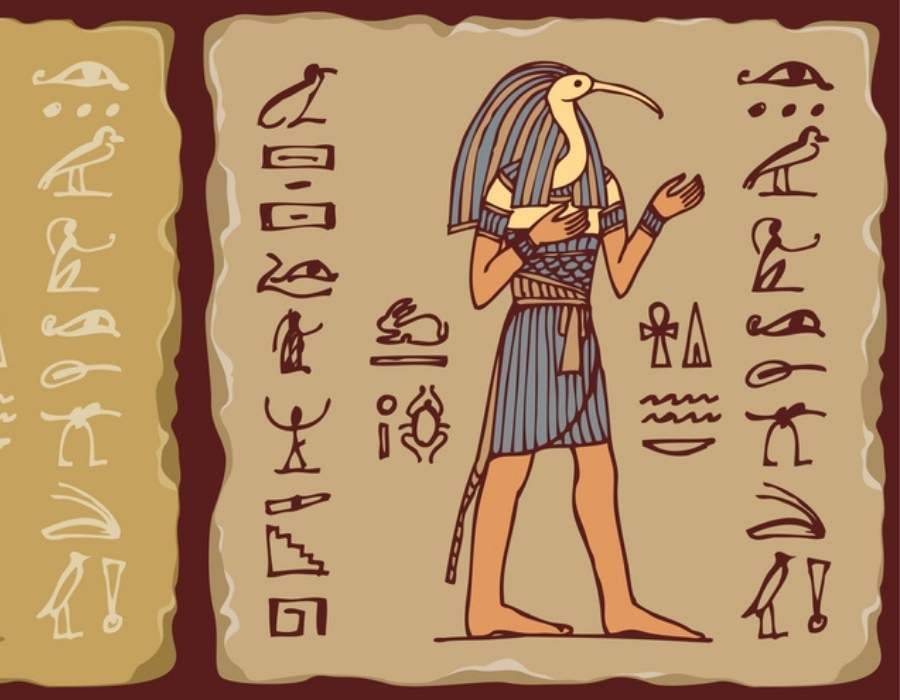
African culture
In a culture with an array of myths and beliefs, cranes are held in high regard for the kindness they showed towards an ancient African king.
Legend has it that a flock of cranes helped a king who was out for a hunt after he got lost and displaced. Since no other animal would stop and help the king, he asked his goldsmiths to craft a crown for the crane’s head to show his gratitude for saving him from dehydration and death.
However, the jealousy of the other animals led them to steal and destroy the crowns. The king asked his magicians to craft mystical crowns instead to make sure that their impressive tufts will never be taken away from the kind-hearted cranes.
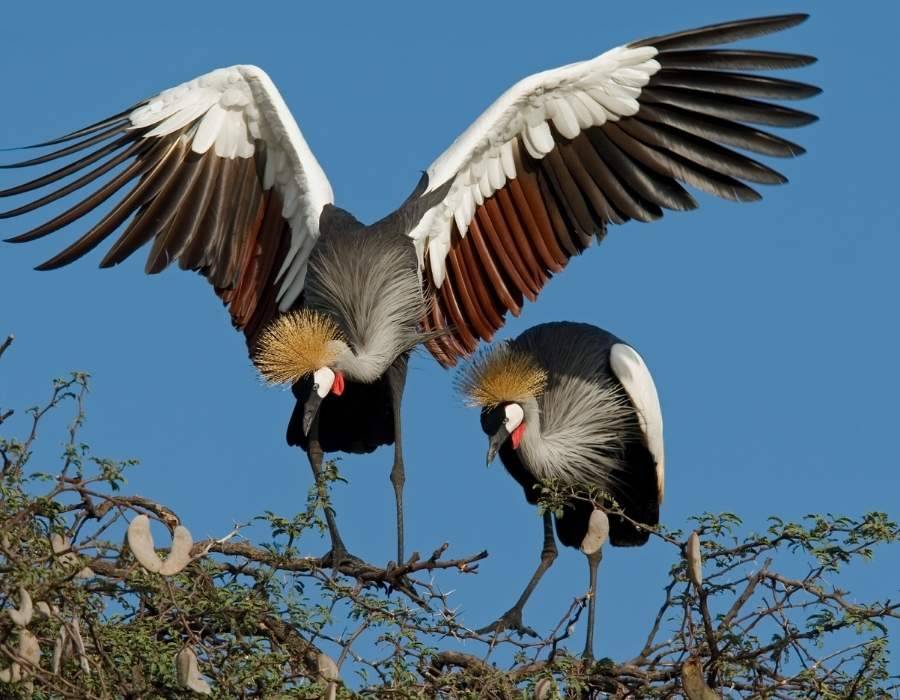
Cranes in Greek mythology
Highly associated to their sun god, Apollo, the crane’s movement and flight patterns were utilized by the Greeks to see into the future.
Typically tall with attractive features, they were perceived as a representation of Gerana, who many claimed was more beautiful than the goddess Hera.
Widely associated with the poet Ibycus, Ancient Greece saw them as agents of truth and justice.
Crane symbolism in Christianity
Cranes were mentioned twice in the Bible, in Isaiah 38:14 and Jeremiah 8:7, the former for their distinct voice and the latter for their role in migration. For Christians, the crane symbolism represents people who do good deeds in the service of others. They serve as spiritual guides to remain on the path to holiness amidst the tests of sin and temptation.
In Christianity, the crane is also symbolic of repentance. This bird has a long neck and can see into heaven. This indicates its ability to look back on past sins with sorrow and repentance. Since cranes eat animals that are associated with evil, they are seen by many as a creature that helps us get rid of our life’s worries and uncertainty.
Crane symbolism in Buddhism
Much like most animals, the crane symbolizes rebirth and renewal in Buddhism.
Their fondness for migrating to warmer areas is seen as a soul that has reached spiritual enlightenment and chose to return to Earth to help others achieve high levels of spiritual awareness.
The Buddhists saw their presence as a reminder of the significance of faithfulness and commitment. Not only does it provide us with clarity, but it gives us a better sense of purpose and fulfillment as well.
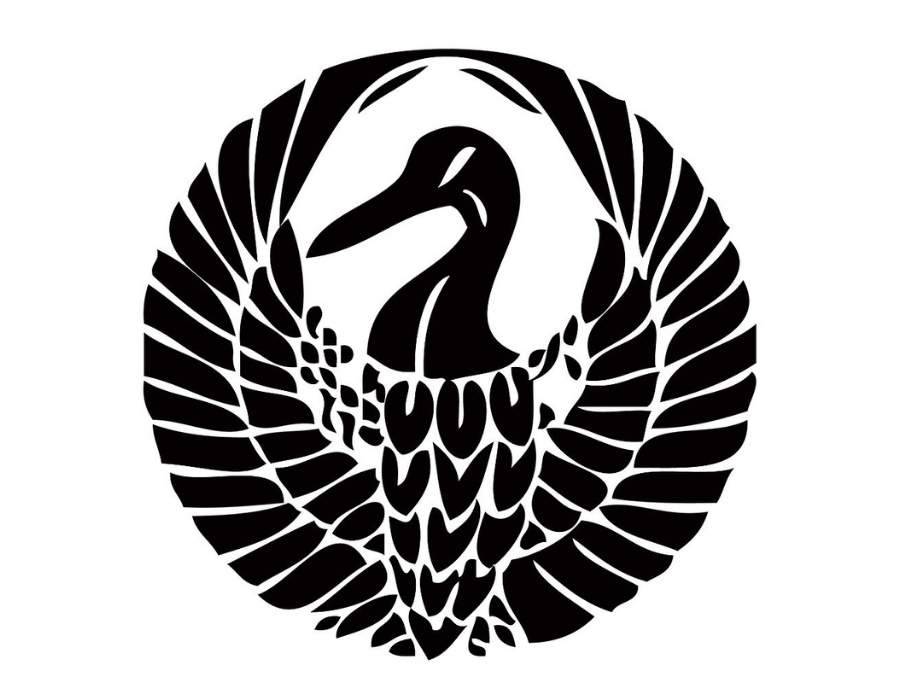
Crane symbolism in Islam
Believed by many as a physical representation of the phoenix, the Muslim belief holds these enormous birds as the symbol of the goddesses Allat, Manat, and Uzza. Revered as Allah’s daughters, they are popularly referred to as “exalted cranes” which bring forth spiritual transformation and immortality to those who give them the utmost reverence.
Common types of cranes and their meanings
Red-crowned crane
Considered perhaps the rarest among the crane species, these typically sizable birds are a symbol of strength, energy, and faithfulness.
While legend has it that these birds achieve their size due to their gift of long life, the red-crowned crane has been revered as an indication of peace, longevity, and wisdom.
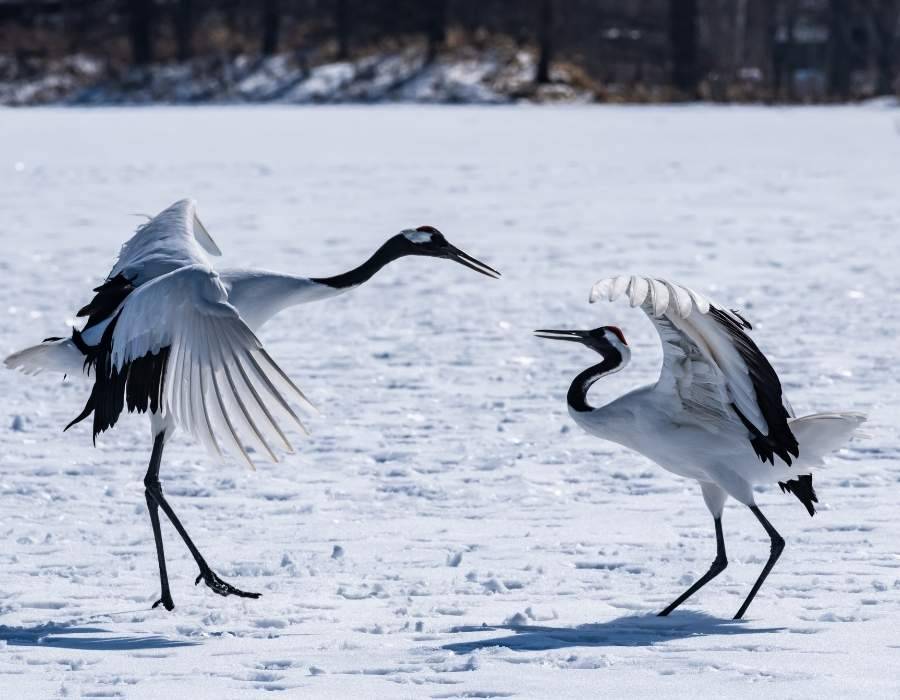
White cranes
White cranes are adored and cherished in many cultures as a symbol of discipline, fidelity, and vigilance.
They are believed to be messengers of God who serve as our spirit animal guides, sweeping down on us in times of anxiety and imbalance.
As totem animals, white cranes are known to help clear and bring light to us when we are in our darkest.
Cranes are identified to have the ability to carry us to higher spiritual consciousness. They also provide us with the wisdom to grasp and celebrate the love and joys in our lives.
Blue crane
Commonly found frolicking the waters of South Africa, blue cranes signify faith, sensitivity, and freedom.
They would often swoop into our lives to remind us how we should be gentle with both our actions and words. They also remind us to be grateful and satisfied with the gifts we have.
The crane spirit animal meaning
The crane spirit animal has long been perceived to be attuned to each of the elements. When it unexpectedly comes into your life, it may be an indication that we should use our past experiences to strengthen us to go through the challenges of the present.
Appearing to those struggling with life’s hardships and mysteries, the crane spirit reminds us about the importance of keeping to ourselves and understanding the value of secrets.
Encounters with this spirit animal are signs asking us to look deep into ourselves as there may be times when we’ve failed to treat people with fairness.
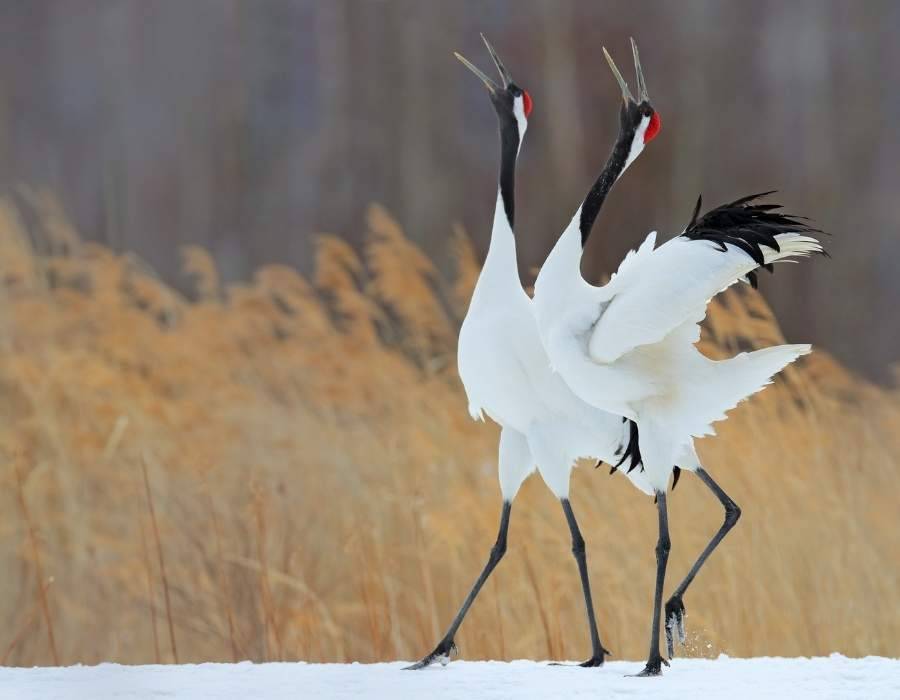
Their ability to remain faithful to a single mate for life easily made a crane pair spiritual guides that teach us how to use and share wisdom in the best and most fitting ways.
Apart from being a symbol of durability and justice, cranes are perceived to be messengers of God.
Apart from being a symbol of fairness and durability, cranes are perceived to be messengers of the Divine. Their unique calls and mating ritual dance enable us to communicate with our spirit guides and heed the messages that we might not have noticed.
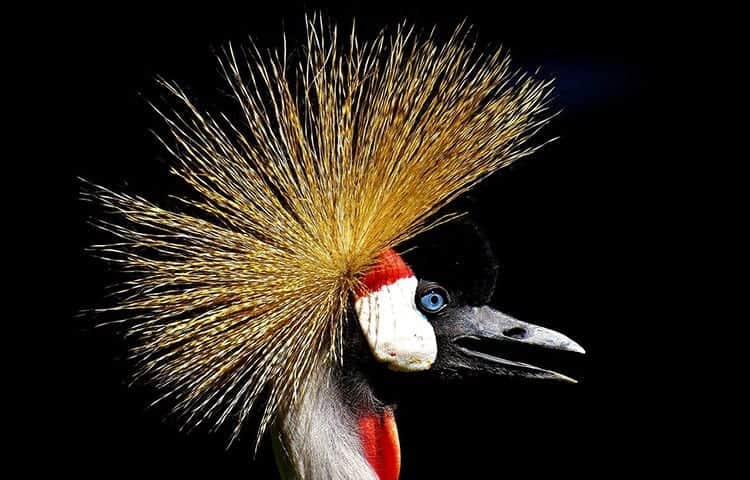
The crane animal totem
The crane animal totem often appears at a point when you have lost complete control of certain circumstances. It swoops down to offer a respite and a chance to re-establish your life’s stability and balance.
Having the crane totem signifies that you are a well-balanced person who is in control of all aspects of your life. It gives people the grace to understand other people’s needs and the elegance that enables you to foster empathy towards your peers.

The crane totem animal inspires us to put loyalty in high regard, particularly in our relationships. These faithful birds stir us to respect and love our partners until the end of time.
Cranes keep you focused on your goals and provide you with a persevering spirit to keep working until your aspirations are met.
The crane animal totem gives us the wisdom that will inspire others to go to you seeking your opinion and advice.
With cranes as your totem animal, you are seen as an individual who is in touch with his spirituality. It also shows that your journey towards higher spiritual knowledge and enlightenment is dynamic and limitless.
The crane power animal
The crane’s ability to assemble in a flock prompts us to seek or provide opportunities to engage with others and socialize.
The appearance of the crane spirit may be a reminder of the importance of keeping in touch with our friends and loved ones.
Having this adored migratory bird as a power animal provides us with the spiritual awakening that helps us develop close relationships. It also gives us the courage to let go of the people that make life toxic.
Although the crane symbol teaches us the importance of community, its presence reminds us of the value of independence and individuality.
Exploring Crane Symbolism Across Cultures: Meanings and Traditions
The elegant crane has captivated human imagination for millennia, earning its place as one of the most revered birds in cultural symbolism worldwide. Beyond the meanings already explored, crane symbolism extends into fascinating cultural traditions and artistic expressions that continue to influence modern interpretations.
The Sacred Meaning of 1,000 Cranes in Wedding Traditions
In Japanese weddings, the “1001 cranes wedding tradition” has deep symbolic significance. Brides often fold 1,000 origami cranes (senbazuru) before their wedding day, demonstrating patience and commitment. The final crane is ceremoniously folded by the groom, completing the auspicious 1,001 total. This practice symbolizes the couple’s dedication to building a marriage filled with prosperity, good fortune, and enduring partnership.
Crane Art and Cultural Representations
The “auspicious cranes painting” tradition in Chinese art dates back to the Song Dynasty, where crane artwork adorned imperial palaces as symbols of longevity and wisdom. These majestic birds often appear alongside pines and turtles in compositions known as the “Three Friends of Great Age.” Contemporary crane sculptures and statues continue this artistic legacy, serving as powerful emblems of balance and spiritual attunement in gardens, homes, and public spaces worldwide.
The Significance of Crane Feathers and Physical Attributes
The crane feather holds special significance in many indigenous traditions. Native American cultures view crane feathers as sacred items that connect the physical and spiritual realms. The graceful structure of the crane skeleton inspired numerous architectural designs, demonstrating how the bird’s physical form influences human creativity. The distinctive crane call, which can be heard for miles, is interpreted as a spiritual message—a reminder to remain vigilant and aware of our surroundings.
Modern Interpretations: Crane Tattoos and Personal Identity
The crane bird tattoo meaning varies across cultures but universally represents transformation and spiritual elevation. In modern contexts, people choose crane imagery to symbolize personal rebirth after challenging life experiences. Many adopt the crane as a personal emblem—similar to a coat of arms or clan symbol—to represent family heritage or personal aspirations. The phrase “crane personality” describes someone with patience, grace under pressure, and the ability to navigate different environments with elegance.
Whether appearing in ancient etymology (the word “crane” derives from Old English “cran”), inspiring philosophical quotes about patience and vigilance, or forming the centerpiece of cultural ceremonies like the crane dance, this remarkable bird continues to symbolize humanity’s deepest aspirations for harmony, longevity, and spiritual connection. The enduring presence of crane symbolism across diverse cultures testifies to our universal recognition of this bird’s extraordinary qualities.
What does it mean when you dream of cranes?
Seeing a crane in your dream represents a time when you need to be lifted to new heights. You are able to see things at an established distance and recognize the value of all that’s around you.
The appearance of this bird is a reminder not only of physical growth but also of emotional well-being. One might think about one’s mind or self as something beautiful worth protecting and nurturing. When we feel safe from harm, we can grow our happiness like a tree full of leaves!
A symbol of protection and beauty, seeing a crane in your dream means that you are protective of the people close to you.
While it could mean that there’s something about yourself worth exploring, these communicative creatures symbolize good vision and hearing.
Conclusion
People have always associated the crane symbolism with balance, longevity, and good fortune. Their dance remains to be the distinct and most prominent feature that makes them well-loved creatures (cranes also symbolize love.) The crane’s role as a spirit guide is simply boundless which makes encounters with this prehistoric bird timeless.
Some cranes are almost made extinct, for instance, the whooping crane.
In another post, we compared the crane vs heron and the egret vs crane, please check them out.
Video: Cranes: Symbols of Survival
The crane is on our list of animals that represent life.
FAQ
Is it an omen when you encounter a Crane?
No, not all cranes are good luck. In fact, only the white crane is considered a bad omen in many parts of Japan!
What do paper cranes symbolize?
Paper cranes (Origami) have a long history in Japan and are even considered to be symbols of luck. In Japanese culture, an old folktale says the gods granted longevity to anyone who folds 1000 paper cranes. Another story states that if you make one thousand origami crane wishes, your wish will come true!
What does a crane symbolize in the bible?
The Bible is rife with symbolism and imagery, but the cranes symbolize a common theme of hope. Throughout the scriptures, we see God’s care for his people (Israel) as He continues to send them signs that everything will be all right despite their circumstances. This is why they are often associated with Christ who came to earth to rescue mankind from sin by dying on the cross.
What is the origami crane meaning?
The origami crane is a symbol of peace that’s been recognized by UNESCO. These birds are important in Japan as they represent good fortune.
What does the blue crane symbolize in South Africa?
The blue crane is the national bird of South Africa. It symbolizes life, strength, and freedom. The blue cranes are a sign that rain will soon come to provide water sources for crops.
What is the spiritual meaning of a crane?
Crane symbolism is often connected with the presence of good fortune. These birds are believed to bring protection, longevity, and purity due to their pure white feathers that were once thought to be a symbol of virtue.
What does a crane symbolize in Chinese mythology?
In Chinese mythology, cranes are sacred birds associated with immortality and wisdom. They’re believed to carry departed souls to heaven and serve as messengers between humans and celestial beings. Chinese folklore often depicts cranes alongside deities and immortals, symbolizing elevated spiritual status.
Why are cranes considered good luck?
Cranes are considered harbingers of good fortune because of their association with longevity, fidelity, and prosperity. Their presence is thought to ward off negative energy and bring blessings. In many Asian cultures, crane imagery is displayed in homes and businesses to attract positive outcomes.
What is the significance of crane art in different cultures?
Crane art appears prominently across cultures as symbols of grace and spirituality. In East Asian paintings, cranes represent nobility and longevity. In Western art, they often symbolize vigilance and intelligence. Throughout history, artists have captured the crane’s elegant form to convey transcendence and harmony.
What does a crane represent as a spirit animal?
As a spirit animal, the crane represents wisdom, vigilance, and longevity. Those connected to crane energy often possess heightened intuition and balance between earthly matters and spiritual awareness. The crane spirit guide encourages graceful navigation through life’s transitions while maintaining dignity and self-expression.
What is the meaning behind crane sculptures and statues?
Crane sculptures symbolize longevity, wisdom, and spiritual elevation. Placed in gardens or homes, these statues are believed to attract positive energy and good fortune. In feng shui, crane statues represent career success and protection. Their poised stance reflects balance between heaven and earth.
What does the crane dance signify in cultural traditions?
The crane dance celebrates life transitions and spiritual connection across many cultures. In Greek traditions, it mimics the bird’s movements to honor Apollo. In Native American ceremonies, it represents spiritual awakening. Asian crane dances often commemorate important life events, symbolizing joy and new beginnings.
What’s the significance of a blue crane in symbolism?
The blue crane specifically represents peaceful strength and clear communication. As South Africa’s national bird, it symbolizes protection and vigilance. In spiritual contexts, blue cranes are associated with throat chakra energy, encouraging truthful expression and the courage to speak one’s wisdom.
